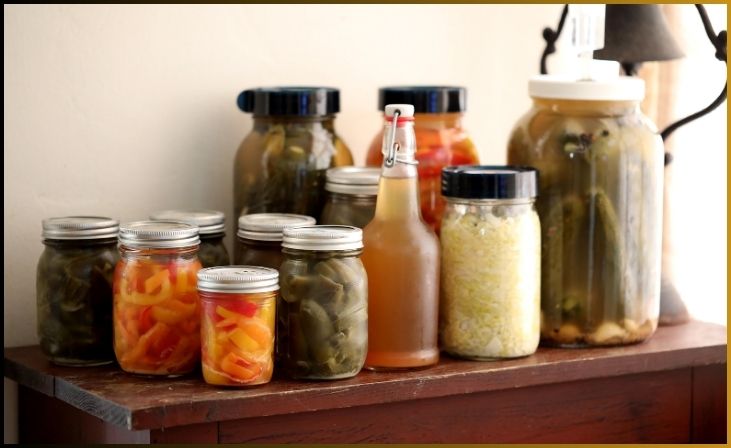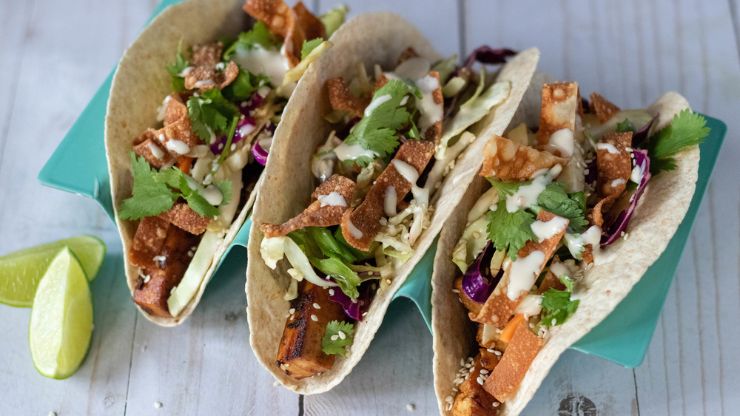Who makes just plain ol’ kraut when other flavors are to be had. Did you try the sauerkraut with a hint of citrus, yet? Well, here’s another. Taco Kraut is an easy sauerkraut in a jar recipe with more than a hint of cilantro. So, if you love cilantro like I do, try this recipe for Taco Kraut.
Are you ready to embark on a taste adventure that combines the probiotic goodness of sauerkraut with the zesty, savory flavors of tacos? Introducing Taco Kraut, a sauerkraut variation that brings a vibrant twist to your gut-healthy journey. In this blog post, we’ll guide you through the exciting process of creating Taco Kraut right in your kitchen. From selecting the finest ingredients to the fermentation magic that happens in your jar, you’ll be well-equipped to embark on this flavorful journey. So, let’s dive into the world of Taco Kraut and discover how this unique sauerkraut variation can elevate your culinary experience and promote gut health.
Table of Contents
ToggleHow to Make Taco Kraut–A Sauerkraut Variation
This fusion of tangy fermented cabbage and the bold essence of taco seasoning will not only tantalize your taste buds but also provide a dose of gut-friendly bacteria to support your digestive well-being.
An Easy Sauerkraut in a Jar Recipe
Here is an easy sauerkraut in a jar recipe. Simply follow the below-mentioned instructions.
Yield: 1 quart
Fermentation Time: 2 to 3 weeks
Storage Time: 6 to 12 months
Ingredients:
- 1 medium cabbage, shredded finely
- 1 cup (40 g) packed, rough-chopped cilantro
- 4 tsp (20 g) Himalayan salt
- 4 green onions, finely sliced
- 1 jalapeno pepper, seeded and chopped
- 3 large garlic cloves, peeled and minced
Directions:
Combine all the ingredients in a large bowl. Mix well to combine. Pound the cabbage with a kraut pounder to release the juices. Alternatively, allow it to sit, covered, for one hour to allow the juices to be released.
Pack the sauerkraut tightly into a Mason jar, leaving at least two inches (50 mm) of headspace.
Don't just scroll, subscribe!
BuzzTrail's unique web-stories are the cure for boredom you've been waiting for.
Add the fermentation weight from the Fermentools kit. Check that the brine is above the level of the fermentation weight. If not, mix one cup of water with one teaspoon of salt and pour this brine into the jar until the fermentation weight is completely covered.
Place the Fermentools airlock on the top of the jar. Place the jar on a plate to catch any overflow.
Place the sauerkraut in a cool room that is maintained at a temperature of 60-80°F and allow the jar to ferment two to three weeks.
Once the fermentation has stopped actively bubbling, remove the fermentation weight and airlock. Cover with a sanitized jar lid. This can be refrigerated or placed in cold storage for six to 12 months.
This sauerkraut goes well with tacos of all kinds but also works well with bean dishes, salads, quesadillas, or alongside stir-fries.
Traditionally Fermented Foods

The book Traditionally Fermented Foods takes a fresh look at home fermentation of vegetables, grains, dairy, beverages, and condiments, examining ways to preserve food the way the ancients did, without electricity. The author, Shannon Stonger, lives off-grid in Texas, where summer temperatures can be above 100°F. She has perfected the art of fermentation in this warm climate. Shannon is the writer behind the Nourishing Days blog and a contributing writer for Cultures for Health.
How to Ferment Foods without Refrigeration
According to Shannon, the key to fermentation, and long-term storage of fermented foods without refrigeration is in the manipulation of salt and temperature. Shannon uses less salt in her ferments and ferments the jars at a lower temperature—between 60-80°F—to obtain optimal flavor and texture. Higher temperatures turn the vegetables mushy and produce off flavors in the Texas heat. Lower temperatures produce good texture and flavor, preserving the food long term.
Instead of placing finished ferments in a refrigerator, which stops the fermentation process, Shannon places her ferments in a root cellar or cold basement where the temperature is naturally maintained at 40-60°F. This allows the fermentation process to continue when the vegetable ferments are in storage, which increases the complexity of the flavor and allows the proliferation of probiotic bacteria to preserve the food. If you’ve been afraid to remove the fermented vegetables from your refrigerator and put them in a cool storage spot, like an unheated basement or a root cellar, this book will inspire your courage.
The recipes in Traditionally Fermented Foods are innovative and easy to follow and don’t call for exotic, hard-to-find ingredients or expensive equipment. You’ll be fine to make all the vegetable ferments in the book with just your collection of Mason jars and a few Fermentools kits.
Traditionally Fermented Foods include recipes for other fermented foods as well, including sourdough bread, kombucha, kefir, and dairy. If you are new to fermentation this book is a good place to start your education. If you’ve been fermenting for a while, Traditionally Fermented Foods is innovative and inspiring.
Final Words
Taco Kraut is more than just a sauerkraut variation; it’s a flavor-packed journey for your palate and a gift to your gut health. This innovative combination of sauerkraut and taco seasoning creates a symphony of tastes and benefits that you won’t want to miss. Whether you’re a sauerkraut enthusiast or a taco lover, Taco Kraut brings the best of both worlds to your plate. The probiotics in this fermented delicacy offer essential support for your digestive system, while the tantalizing flavors will have you coming back for more. So, why not embark on a Taco Kraut adventure today and treat your taste buds and gut to a fiesta they’ll never forget?
FAQs
What inspired the creation of Taco Kraut?
What inspired the creation of Taco Kraut?
Taco Kraut was born from the desire to infuse the health benefits of sauerkraut with the bold and exciting flavors of tacos. It’s a culinary innovation that marries the worlds of probiotics and taste.
Is Taco Kraut suitable for vegetarians and vegans?
Is Taco Kraut suitable for vegetarians and vegans?
Absolutely! Taco Kraut can be tailored to suit various dietary preferences. You can easily create a vegan or vegetarian-friendly version by selecting appropriate ingredients.
How long does the fermentation process take for Taco Kraut?
How long does the fermentation process take for Taco Kraut?
The fermentation duration can vary, but generally, it takes about 7-14 days. You can taste it along the way to achieve your desired level of tanginess.
What are some creative ways to enjoy Taco Kraut?
What are some creative ways to enjoy Taco Kraut?
Taco Kraut is incredibly versatile. You can savor it as a topping for tacos, burritos, or nachos, or get creative by adding it to sandwiches, salads, and even omelets for a delightful twist.

